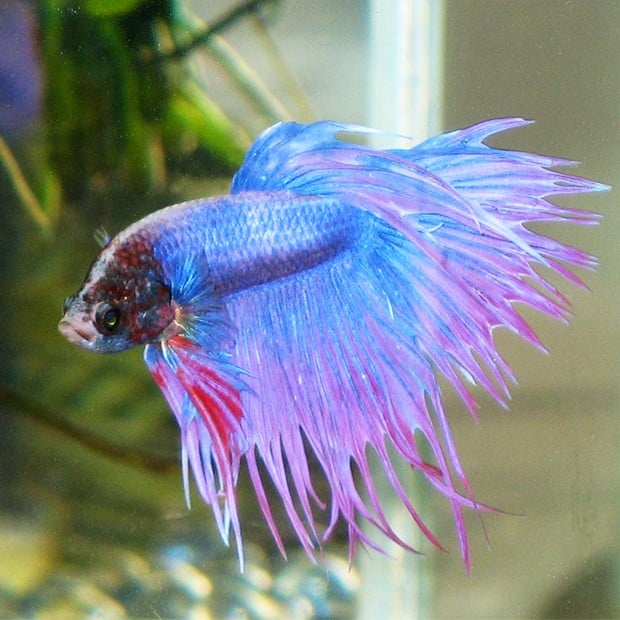Reproducing Betta Fish: a Comprehensive Step-By-Step Guide to Efficiently Raising Baby Bettas From Eggs to The Adult Years
Breeding Betta fish is a precise venture that calls for careful preparation and execution to guarantee the effective development of fry from eggs to develop fish. Picking genetically diverse breeding couple with desirable attributes is just the beginning; producing an optimum environment and recognizing the intricacies of the breeding procedure are equally important. As the male Betta faithfully constructs a bubble nest and guards the precious eggs, the subsequent phases of care and transition need focus to information and knowledge of finest techniques. Just how does one navigate the challenging yet satisfying course of supporting these vibrant creatures to their adult years?

Picking Breeding Pairs
When embarking on the trip of reproducing Betta fish, choosing the appropriate reproduction pairs is important to achieving preferable qualities and a healthy family tree - betta fish. The initial step in this process is to identify the certain characteristics you wish to boost or protect, such as shade, fin type, and physique. It is important to select genetically diverse sets to avoid inbreeding, which can bring about health and wellness concerns and unfavorable characteristics
Examine potential reproducing candidates meticulously. A healthy male Betta must exhibit vivid colors, an energetic disposition, and well-formed fins, while the lady ought to additionally display dynamic coloration and a rounded stubborn belly, indicating preparedness for spawning. Observing the temperament of both fish is crucial, as hostile or overly shy people may not reproduce efficiently.
Documentation of family tree is just as essential. Maintaining documents of the parent fish's ancestry can assist you track hereditary characteristics and prospective concerns. Additionally, seek advice from reliable dog breeders or on-line sources for guidance on choosing suitable sets. Inevitably, investing time in the selection process will dramatically enhance the possibility of creating solid, lively spawn that meet your breeding goals (betta fish).

Preparing the Breeding Container
Creating an ideal breeding atmosphere is a vital action after selecting appropriate sets for Betta fish. The breeding storage tank should be specifically developed to supply comfort and promote the natural reproduction habits of the fish. Beginning with a storage tank size of at the very least 10 gallons to guarantee adequate room for both the male and women Bettas.
Maintain a mild purification system to keep the water tidy while preventing solid currents that can worry the fish. In addition, an air stone can be contributed to offer oxygenation without interfering with the water surface also much.
Temperature level policy is crucial; go for a stable variety of 78-82 ° F(25-28 ° C) using a trusted heating unit. The pH degree ought to be kept in between 6.5 and 7.5, and routine water adjustments are necessary to guarantee high water top quality.
Incorporate floating plants or generating mops to produce concealing places for the female, while likewise urging bubble nest structure by the male - betta fish. Ensure the storage tank is complimentary from sharp decors and any kind of potential risks, as the well-being of the fish need to constantly be prioritized during this vital stage of reproduction.
The Reproduction Refine
Commonly, the breeding process for Betta fish involves a series of distinct and observable habits that suggest preparedness for recreation. The male Betta starts by constructing a bubble nest at the water's surface area, which functions as a website for the fertilized eggs. This nest is essential, as it offers a risk-free atmosphere for the eggs till they hatch.
Once the nest is established, the male will show courtship habits, such as flaring his fins and exhibiting dynamic colors to draw in the woman. The female, upon sensing the man's readiness, will react by showing upright red stripes along her body, indicating her receptiveness.
When the women approaches, the male takes part in a breeding dancing, usually bring about an accept called the "spawning." During this welcome, the lady releases her eggs, which the male fertilizes immediately. The fed eggs after that are up to the bubble nest, where the male carefully accumulates and returns them to the nest. Following this, the male presumes responsibility for guarding the nest and making certain the security of the eggs until they hatch out, normally within 24-36 hours. This stage is crucial in you can try these out the reproducing procedure, laying the foundation for effective fry advancement.
Taking Care Of Betta Fry
Taking care of Betta fry requires careful attention to their setting and nutrition to make certain healthy development and advancement. After hatching, Betta fry are very little and at risk, requiring a secure and clean habitat. Keeping a water temperature in between 78 ° F and 80 ° F is crucial, as Betta fry prosper in cozy conditions. In addition, ensure that the water is without harmful toxic substances; normal water changes of 10-20% are suggested to keep optimum water quality.
Feeding Betta fry is similarly important. Feed them little quantities numerous times a day, being mindful not to overfeed, which can lead to water top quality concerns.
Transitioning to Adult Bettas
As Betta fry mature, transitioning them to adult Bettas is an important stage that needs careful management of their setting and social communications. This procedure normally begins when the fry reach around 6 weeks old, at which point they can be gradually introduced to an extra organized living environment.
To promote this transition, it is necessary to make sure that the water specifications-- such as temperature level, pH, and ammonia levels-- are optimum and steady. Adult Betta fish grow in warm water (around 78-80 ° F) with a pH of 6.5 to 7.5. Gradually adapt the fry to these conditions to decrease anxiety.
Social interactions are an additional key aspect; male Bettas are notoriously territorial and hostile. For that reason, it is advisable to different men right into specific tanks as they develop. Female look at this now Bettas can be housed with each other, but care needs to be taken to keep track of for indicators of aggression.
Additionally, nutritional anonymous changes ought to be made as the fry grow. Include top quality pellets and live foods to sustain their development and health. By handling these aspects properly, you can promote a successful shift to the adult years for your Betta fish.

Final Thought
Effective breeding of Betta fish calls for cautious attention to information throughout the whole procedure, from picking genetically diverse sets to supplying optimum treatment for fry. Furthermore, a well balanced diet plan and gradual adjustment to adult settings are vital for the growth and growth of Betta fish.